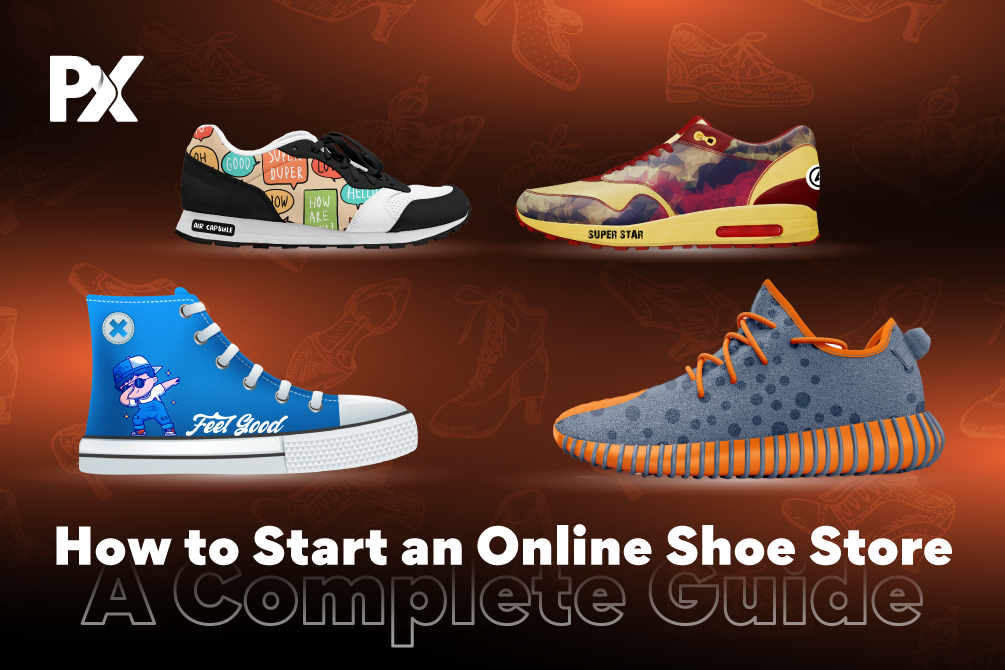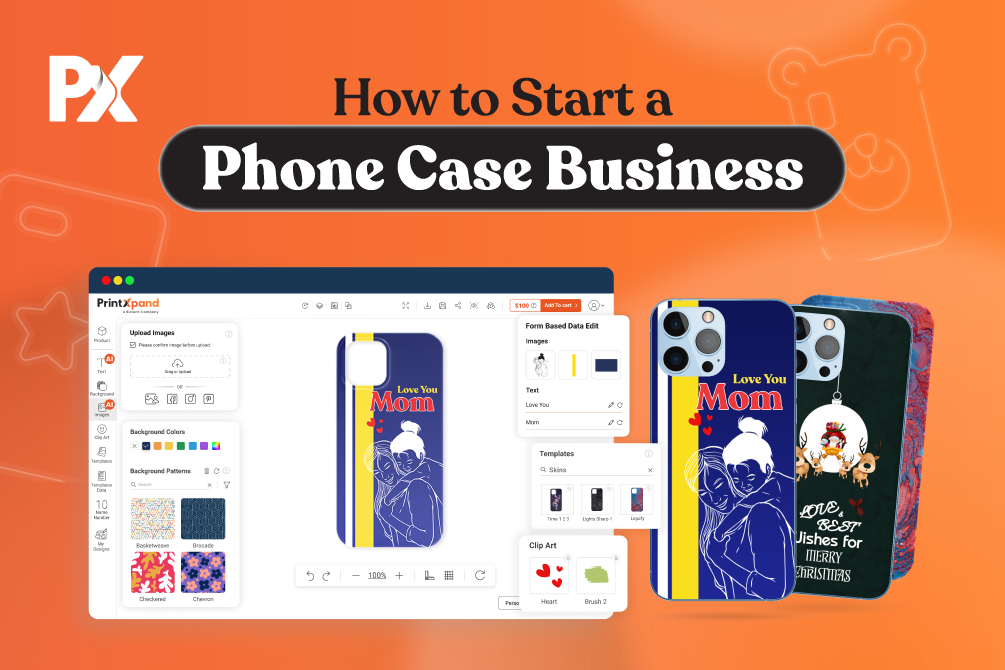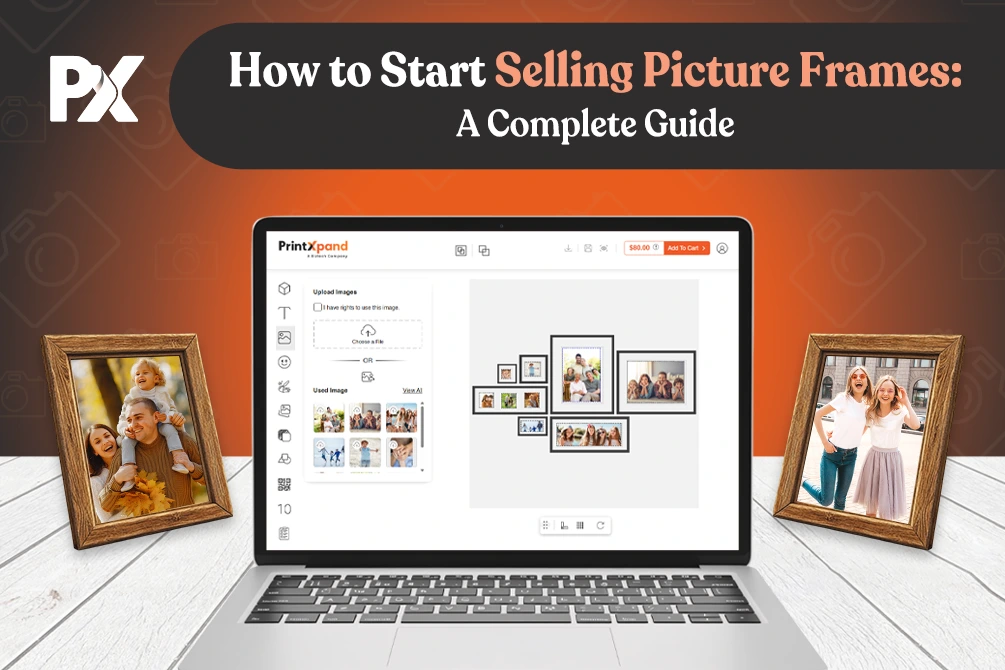Summary
The global footwear market is estimated to grow with a CAGR of 5.25% from 2025 to 2030.
Significant growth of the footwear market makes an online shoe business a promising business idea.
Many first-time entrepreneurs get super excited to start their venture, but even the most passionate minds find it difficult to tackle challenges when it comes to actual selling.
When it comes to selling shoes online, the most significant barrier is return rates. In the footwear industry, the return rates for online sales range from 2% to 31%.
As an eCommerce store owner, the last thing you want is to handle product returns – the most challenging aspect of doing business online.
To avoid such complications, you need a solid strategy that works right from choosing a type of shoe to delivering an exceptional experience on your website.
With that in mind, we have prepared this detailed guide to provide all the information you need to start an online shoe store from scratch.
Everything You Must Have to Start an Online Shoe Store
Starting an online shoe store requires careful planning and execution. Simply having a good idea is not enough. From picking a trending product idea to launching a website, understanding customer needs, and managing supplies, every step matters. You’ll also need strong marketing and customization options to stand out in a competitive market.
So, here’s a breakdown of how to do it!
Step 1: Find a Trending Product Idea
It’s up to you whether you want to sell shoes, for men, women, sneakers, boots, or any other type. A good thing to do is to do market research, prepare an online shoe business plan, and understand what works and what doesn’t. Suppose you are in Europe and you want to sell in the Asian market. Start by asking questions: which are the best-selling shoes in Asia? Which specific product do I want to focus on? How will I sustain my business?
You can look for freelance marketers with experience in your chosen market to help you find the answers to these questions.
If your goal is to sell any and every type of shoe, beware it’s not a smart move.
Of course, everybody needs shoes. But targeting everybody is a risky thing in eCommerce. Even the experts suggest that starting by choosing a niche product that aims at specifying specific market needs. You might have already figured out but in case you have not, here’s what you can do
Instead of thinking, “I want to sell men’s shoes,” focus on a narrow market like leather shoes, knee-high boots, sneakers, and so on. Focusing on a niche will aid in getting in front of the right audience for a small business.
No matter which niche you choose, one way to stand out from your competitors and build a loyal customer base is to consider offering customizable shoes.
Your customers no longer want to have the same generic white sneakers. They want to add a personal touch to their shoes, and hence biggies like Adidas and even startups have started enabling product customization.
For instance, below is a design studio by BullFeet. The brand allows shoppers to choose from different colors and lets them add logos as per their choice.
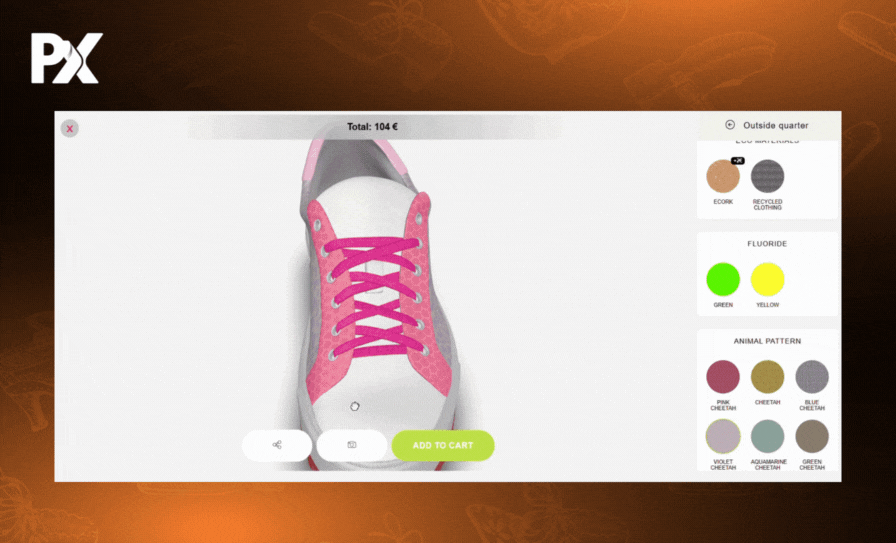
(Custom Shoes to Let Shoppers Add a Personal Touch)
Curious to know how you can start selling custom shoes online? With PrintXpand’ fully-functional Explore Web to Print Solutions, you can let your customers design your product. Click the link below and see how the magic of product customization works.
Step 2: Check the Legal Requirements
Before starting an online shoe store, you have to get into the nitty-gritty of clearing legal requirements and creating a strong brand identity.
Here’s a complete checklist of what you need to have before starting an online shoe store:
1. Your Store’s Name
Make sure the name of your online shoe business represents your vision in just one or two words. Don’t be obscure, but think of something that is memorable. Tools like Shopify’s Business Name Generator, Brand Bucket can be helpful for brainstorming.
2. Business License
Starting an online shoe store doesn’t exempt you from certain legal requirements. The licenses you require depends on the type of product and your business requirements. Moreover, every state and city has different requirements, which you need to find out. Some licenses that an online shoe business requires include:
- A Business Operation License which allows your eCommerce business to conduct business in your city, county, or state.
- An Employer Identification Number (EIN) that identifies your business as a distinct tax entity.
- A Seller’s Permit (or Seller’s License) to legally sell the shoes online.
3. Brand Logo
A logo is one of the most recognizable things about your business. A well-crafted logo can send the right message to your target audience. Use simple icons and fun colors to communicate who you are and what you do. Tools like Logomaker and Adobe Illustrator will make your task easy.
4. Product Pricing
A product with a high price might see fewer sales. While lower rates are not always ideal. As a store owner, the best you should do is balance. After considering factors like product and business cost, competitor’s price, and revenue goals, choose the right pricing strategy for online shoe business.
A high-priced product may attract fewer buyers, while lower prices aren’t always the best strategy. As a store owner, the best you should do is find a balance between the two price points. After considering factors like product and business cost, competitor’s price, and revenue goals, choose the right pricing strategy for the online shoe business.
Here are some strategies that will aid your decision:
- Use the MSRP—the price your manufacturer recommends.
- Keystone pricing is where you double the wholesale cost of your product to determine the retail price.
- Competitive pricing is where you consider competitor pricing data as a benchmark and consciously price your product below theirs.
Starting an online shoe store requires in-depth market research and choosing tech tools. At PrintXpand, we have the skills and experience to understand your requirements and offer services within your budget. Let’s get in touch to see how the show designer will work with your e-store.
Step 3: Launch Your Website
Your products need an eCommerce website. There are two major eCommerce solutions
(a) SaaS eCommerce platforms like Shopify, BigCommerce, best suited if you do not want to deal with technical complications. The provider builds, hosts, and manages the software. This limits your ability to customize.
(b) open-source like WooCommerce, Prestashop where you can view, change, or distribute the source code as per your purpose. They give you complete control to personalize your source.
There are loads of eCommerce builders. Some are reliable, some require technical expertise, some are expensive, while some are budget-friendly. Here are some eCommerce platforms that you should consider when starting an online shoe store:
1. Shopify
Start selling from $29.99 a month
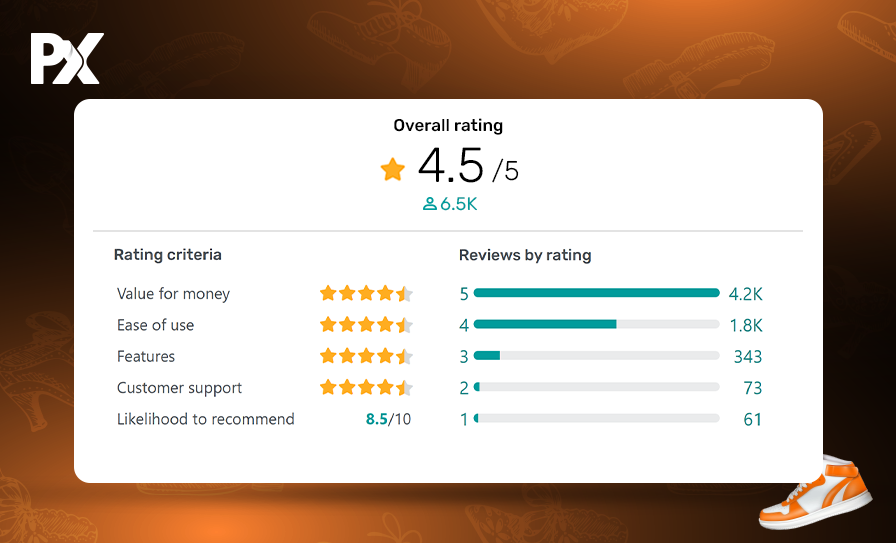
(Source )
2. BigCommerce
Start selling from $39 a month
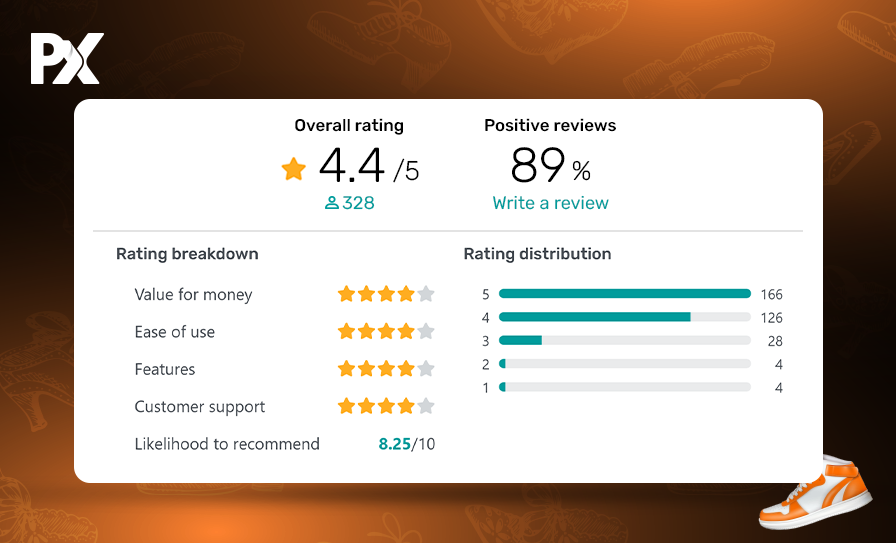
(Source)
3. WooCommerce
Starting at NO COST!
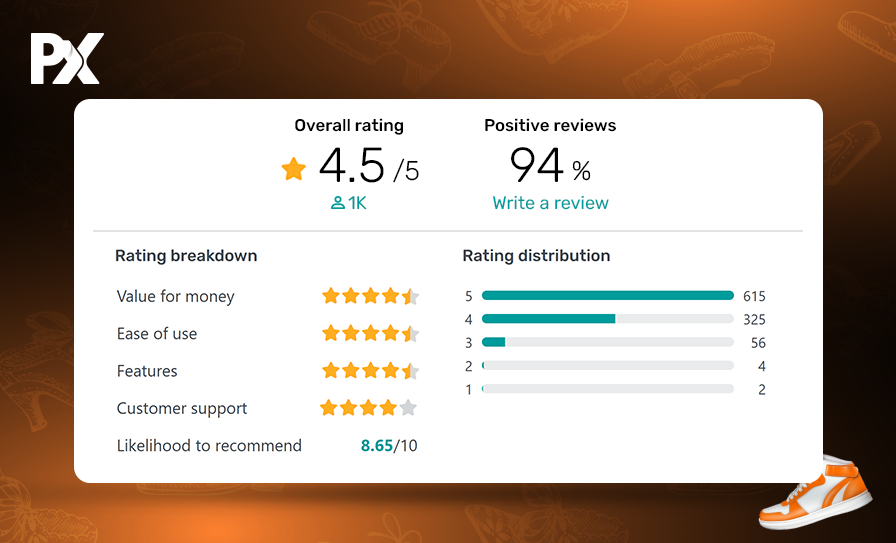
(Source)
4. Magento
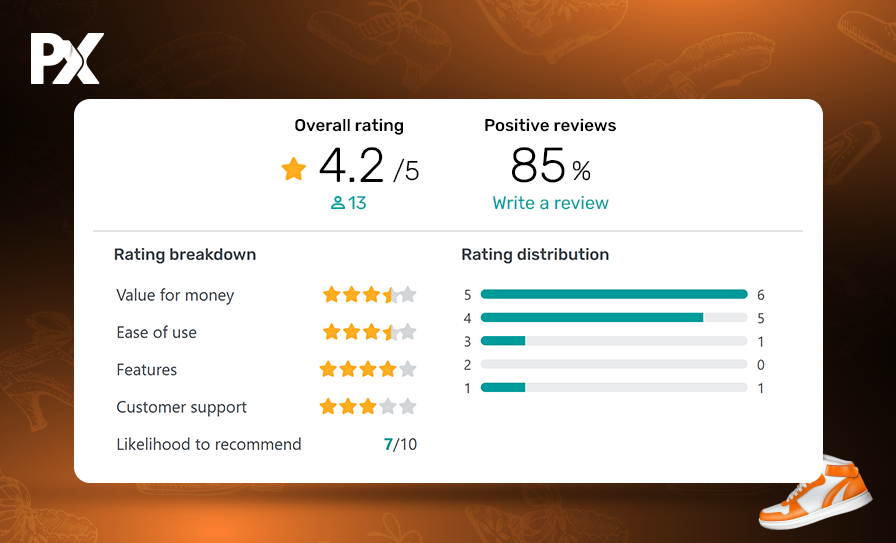
(Source)
5. Weebly
Starting at $10 monthly

(Source)
Following are the features you should look for when selecting an eCommerce platform:
- SEO-friendly – When shoppers look for shoes in the search engine, it should be easy for them to find your brand. If you are a new online store, you would want to ensure that your shop ranks high in the search results. Look for an eCommerce platform that is SEO friendly which allows you to add your blog, use your domain name, get hosting from a hosting provider like Siteground alternative, and collect customer reviews. These are crucial to driving organic traffic.
- Security – The most important thing to consider while choosing a platform is security. In the future, your online store is actively going to take digital payments. Be sure the platform you choose offers top-notch security. Choose a platform that supports HTTPS/SSL for a safe checkout. Moreover, it must be equipped with PCI-DSS compliant payment solutions such as PayPal, Stripe, Square, WorldPay, Braintree, and SecurePay for secure payment processors.
- Analytics – After you launch your online shoe business, you will want to keep track of analytics on how your shoe store is performing. Consider a platform that allows you to track sales, order amount, and more.
- Mobile responsiveness – With the increasing use of smartphones and tablets, it’s crucial to have a mobile-responsive eCommerce platform. Look for a platform that allows your online store to be mobile-friendly, meaning it adapts to different screen sizes and is easy to navigate on smaller devices. This will ensure that your customers have a seamless shopping experience regardless of the device they use.
Creating an eCommerce website is an important first step in starting an online shoe store. You can either build a website from scratch or go for a ready-to-use web to print storefront.
At PrintXpand, we help businesses launch their websites with a web to print store that includes features like catalog management, product management, customer orders, and more. Request a FREE personalized demo and get a personal tour of our web-to-print storefront.
Request a FREE personalized demo and get a personal tour of our web-to-print storefront.
Step 4: Follow the Essential Checklist for Your Online Shoe Business
A. User-friendly Store
The Internet doesn’t give a second chance. A poorly designed and performing website is a major credibility killer. Did you know 88% of online consumers are less likely to return to a site after a bad experience?
The key here is to help shoppers get what they want without unnecessary clutter. This means you need to focus on the user experience by providing shopping categories, filters, and capabilities to compare products and prices.
B. Nice Videos and & Photos
If you are thinking of posting a picture and writing the description in bullet points, then it’s not a good idea. Shoppers want to see the product image from different angles. Let them not just zoom into the picture but get a feel of the picture. Your shoe store needs high-resolution photos and videos that do not take too long to load.
C. Mobile-friendly Experience
According to Statista, about 30% of internet users worldwide made weekly purchases using a mobile device in 2023. And two years down the line, we could only expect that this percentage would have gone up! To give a user-friendly experience, ensure that your store is responsive and adapts to whatever device is accessing it.
D. Return Policy
ensure your shoe store has a clear return policy. This will help build trust with customers that your brand is there for them in case of anything.
Moreover, mentioned below are more tips that you can use to reduce the returns or simply increase your sales with a shoe design software!
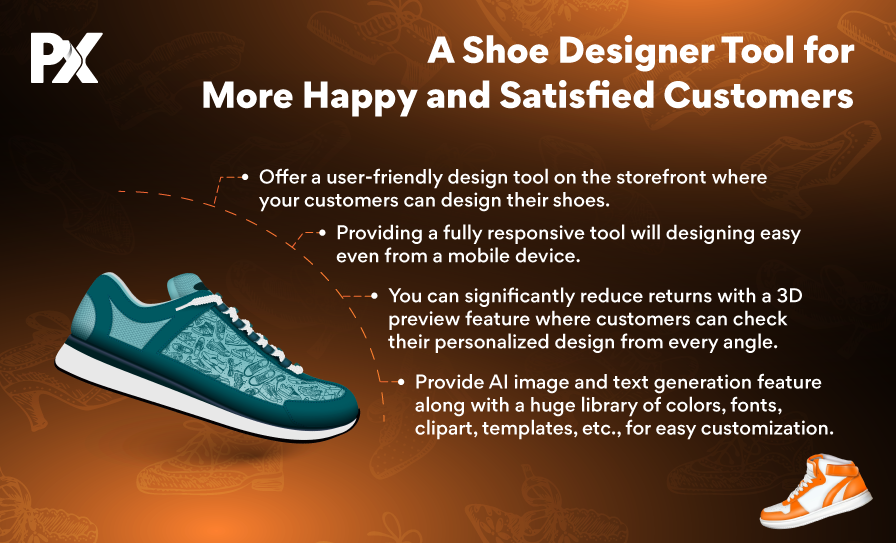
(Tips to make customers more happy and satisfied using a shoe design tool)
Explore the other features and functionality of a shoe designer tool. Check out the demo now!
Step 5: Make Your Online Shoe Store Remarkable!
Once you build your online shoe business’ website, you need to attract visitors. Let’s find out how to make your shoe store remarkable and get a ton of traffic.
How do you think Nike generated USD $2.54 billion in net income?
For years, the color and design of each Nike shoe were limited. When customers were more and more looking for customization, most shoes that Nike offered were either in black or white.
Later, Nike introduced a game-changing platform to change the way customers buy sports shoes, and bring more innovation to the operating model of shoe manufacturing.
You can provide similar value to your customers by integrating a 3D Configurator or even a Product Design Tool.
With a 3D Configurator, you can offer a shopping experience beyond customization. Your customers can personalize parts such as the outsole, heels, midsole, and even the texture of their shoes. They can have a realistic view of your shoes from every angle.
66% of shoppers feel more confident buying when they can customize products using a 3D configurator. Furthermore, they also prefer shopping on websites that offer 3D viewing options! Thus, integrating this software can lead to higher conversion rates along with fewer returns.

(PrintXpand’s 3D Configurator in Action)
With a 3D Shoe Configurator Tool, your customers can customize every aspect of their shoes, from the color and texture to the outsole and midsole.
And the best part? Seeing their design in a realistic 360-degree view will automatically boost their confidence in the purchase!
Plus, if the Shoe Configurator Tool is mobile-first, your customers can enjoy a seamless shopping experience on any device.
That’s not all! With the rule-based pricing available on the tool, you can set prices based on the quantity, color, cost, printing method, and more.
Don’t settle for a basic online shoe store.
Stand out from the crowd with our Shoe Configurator Tool and give your customers an unforgettable
shopping experience.
Try it out today and see the increase in conversions and customer satisfaction.
You can also deliver an engaging customization experience with a Product Designer Tool. It is a Web-to-Print software with diverse features, using which your customers can create customized designs.
They can browse from a huge library of images, texts, clipart, and ready templates to create personalized designs on any and every device.

(Shoe Design Software by PrintXpand)
What to look for in a shoe design tool?
- Multi-Database Support – The database of the designer tool allows you to access business logic related databases on a PHP server and the end-user related database such as fonts, clip-arts, templates, color, etc. on the MySQL server.
- Large User Accessible Data – The designer tool has a huge library of colors, fonts, clip art, ready-to-use shoe design templates, and more. These templates are easy-to-use for customers.
- Secured and Powerful Tool – The designer application has impeccable security support, protected by SSL encryption that makes the tool more secure for both the admin as well as end-users.
- Superior Browser Support – Multi-browser compatibility helps end-users access the tool. Check if the shoe design tool is compatible with all major web browsers like Google Chrome, Firefox, Opera, Safari, Microsoft Edge, and Internet Explorer.
- Multi-Device Responsive Tool – Make sure the design tool is responsive and compatible with Windows, Android devices, iPad, and iPhone.
Amazing Features of PrintXpand’s Shoes Design Tool
|
Admin Features |
Description |
|---|---|
| Set Custom Pricing | Set pricing of elements in the backend and give your customers a clear idea as per the alterations they make when designing your products. |
| Manage Printing Methods | Product Designer tool supports all types of printing methods. Admin can manage multiple printing methods for their e-store. |
| Add Warning Messages | Add warning messages like print area warning or low resolution, easily from the backend. |
| Restrict Editing | As per your requirement, enable/disable text/image effects, filters, etc. |
| Editable PDF | It lets you edit even after the final order PDF has been generated. |
These features are just the tip of the iceberg.
Now, it’s time to make your customers fall in love with your brand. The best part of our tool is that it
is completely customizable as per your business logic.
Click the Link Below To Know More.
Step 6: Find Out How to Manage Supplies for Your Store
Once you figure out the right product for your shoes, the next step is to source products for your store.
When starting an online shoe store, consider these three options
- DIY products
- Hire a manufacturer or wholesaler
- Hire a dropshipper
1. DIY products
If you want to craft your own shoes then go for it. With the DIY approach, you will have complete control over your brand. Secondly, the startup costs will be low. Although this method will assure quality, it will take up most of your time and energy.
If you are creating the product from scratch, here’s what you will need to do
- Detailed planning
- Source materials
- Look for a rental space to store the inventory and types of machinery
- Either hire a shipping service or run the courier service yourself
2. Manufacturer or Wholesaler
If you are not ready for a DIY product then hire someone to make the product for you. This approach will need more investment in regard to facilities, managing inventory, and business insurance.
Somebody else is making your product that does not mean you have no say. As a brand owner, you have complete control over the quality of your product and the brand.
When choosing a manufacturer or wholesaler, there are two points to keep in mind:
- If you are looking for ready-made products to sell then you can source the products using Alibaba, or partner with an already established shoe company.
- If you want a manufacturer who makes your product, you can easily search on directories, Google, local library, referrals, etc.
Here are a few important questions to consider before choosing a manufacturer:
- What is the minimum order quantity?
- What is the sample pricing?
- What is production pricing?
- What is the turnaround time?
Before you sign up with a manufacturer make sure that meets your expectations. It is always a good idea to ask for a sample item and make the decision accordingly.
3. Dropshipping Method
If you want to start a shoe business without worrying about shoe start-up costs, dropshipping is one of the best alternatives for you. It is a method where you can purchase from a vendor and list their products on your online store. The vendor will charge you as and when you sell the product and ship orders on your behalf. This means you need not worry about inventory, packaging, or fulfillment.
In this approach, you will have a wide selection of products, but you are likely to have more competition, as most of the products that your dropshippers offers are readily available all over the internet.
4. Print-On-Demand
In the print-on-demand (POD) business model, products are printed with custom designs only after someone orders them. This enables businesses to sell unique items like t-shirts, mugs, and posters without keeping stock.
It is a low-risk way to start selling products online because there is no upfront cost and the product is made only when there is an order!
You can also integrate a Product Design Tool and allow your customers to customize a pair of shoes.
Thus, you can sell unique footwear on your online storefront and your print-on-demand supplier can take care of the inventory and order fulfillment.
Step 7: Curate a Marketing Plan for Your Online Shoe Store
Once your products are up, it’s time to start driving traffic to your online shoe store. The objective is to develop a marketing strategy that puts your online shoe business on all the platforms where your followers are hanging out and then uses different ways to connect with them.
Content to keep your audience updated with the latest trends in the footwear industry, the problems they’re facing, and how you can help solve those problems.
- Social media to share that content and then engage with your followers. You can even tell your audience about updates by using streaming platforms.
- Search engine optimization (SEO) to optimize your content, so it will show up when someone is searching for the information you’ve written.
- Embrace paid advertising to drive paid traffic to your shoe store.
- Craft personalized follow up emails to follow up with your customers to ensure they continue to buy your product..
Wrapping Up
That was all the information you need to know for starting an online shoe store. By choosing the right product and delivering an exceptional experience, you will be able to establish a loyal customer base and ultimately build your dream brand.
We at PrintXpand have been working with businesses like yours for over 10 years. We offer various web-to-print solutions, including a fully functional designer tool, inventory management, print job manager, print ERP, and more.
With a successful track record of over 80% of clients, we are sure to deliver to your project requirements. Let’s get in touch to build, sustain, and grow your online store.
All product and company names are trademarks™, registered® or copyright© trademarks of their respective holders. Use of them does not imply any affiliation with or endorsement by them.
FAQs
How do I sell shoes online?
To sell shoes online, choose a niche, source quality products, create an eCommerce store, and start marketing your business on social media and in ads. You can use platforms like Shopify, Amazon, or Etsy to reach more customers.
Is a shoe business profitable?
Yes, the shoe business is profitable with the right strategy. Demand is high, especially for personalized shoes, and profit margins are somewhere between 30 and 50%. However, your profits as well as success depend significantly on product quality, pricing, customer service, and marketing to get more traffic! To attract more customers, you can also integrate an AI-powered shoe design tool into your storefront.
Where can I sell custom shoes?
You can sell custom shoes on Etsy, eBay, and Amazon Handmade. You can also create your own Shopify or WooCommerce store to sell directly to customers and build your brand.
